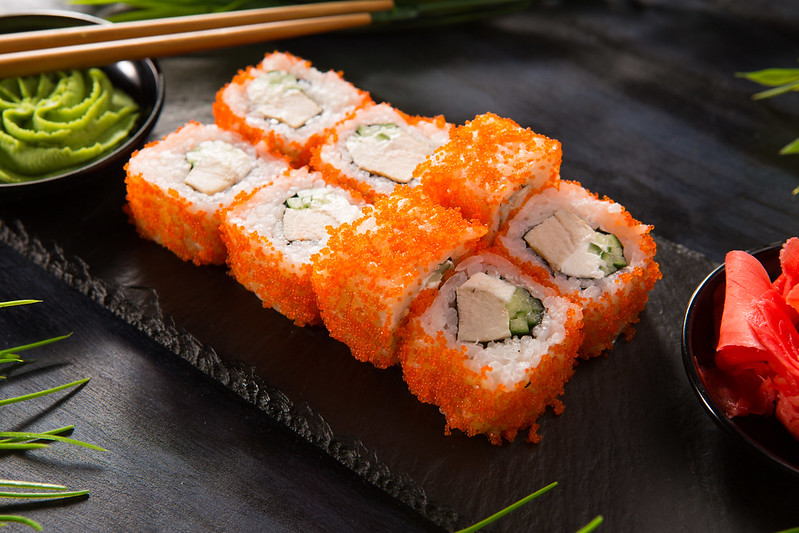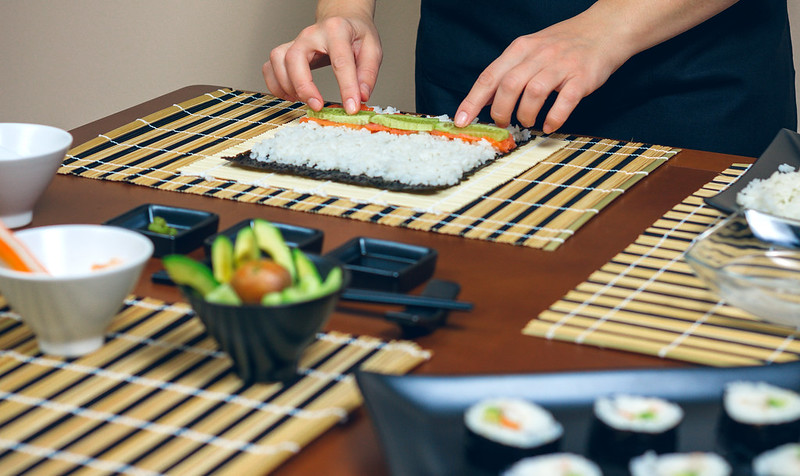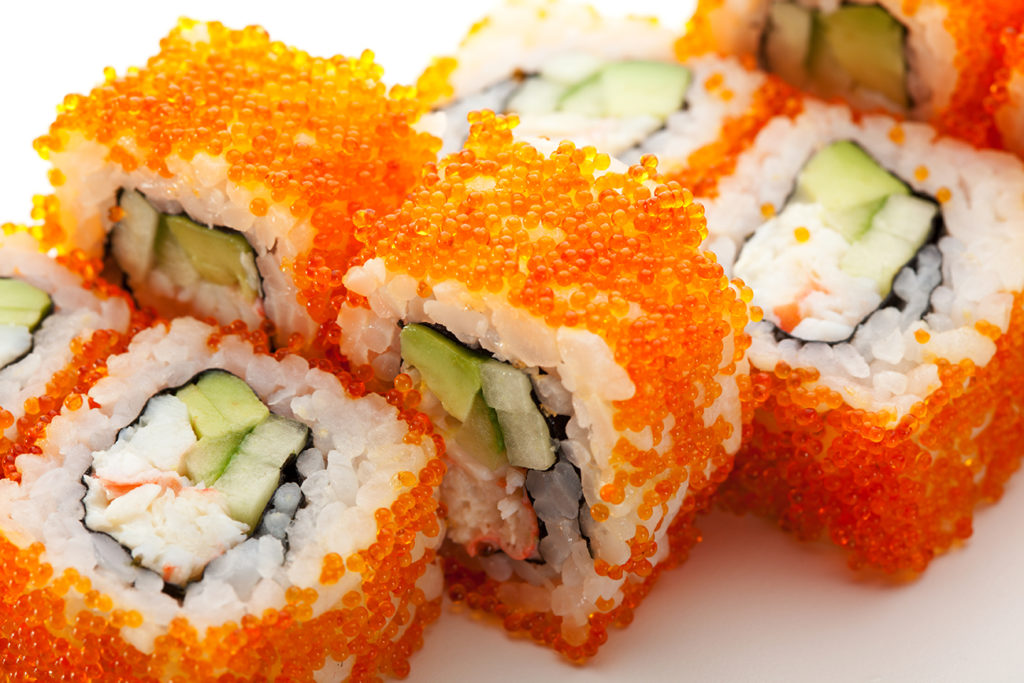
Making California Rolls—an Easy Recipe
A California roll, or California maki, is a kind of sushi roll—one of the most popular kinds in the U.S. and in some other countries. It’s usually made of imitation crab, cucumber, avocado, and mango, all of which are rolled with rice and nori, the seaweed wrap commonly used for sushi.
A Short History
The Tokyo Kaikan was one of the first sushi bars in Los Angeles in the 1960s. The restaurant’s sushi chef at the time was Ichiro Mashita. He used avocado and other ingredients, which eventually led to the California roll as we know it today.
Traditional sushi is almost always wrapped with the nori outside, but the California roll is wrapped “inside out” because Western patrons did not like the nori on the outside of the roll. Its popularity rapidly spread all across America by the 1980s and soon led to the growing desire for even more exotic types of sushi.
How I Make California Rolls
Making a California roll is pretty simple. When I first started to make them, the rolling part was the easiest. It’s the slicing of the roll into bite-sized pieces that’s the most difficult. I ended up crushing several rolls in my repeated attempts to get it right. Here are a few simple, useful techniques I learned along the way.
- Wrap your bamboo mat with plastic wrap so the rice won’t stick to it.
- Wet your hands prior to rolling so that the rice won’t stick to your fingers.
- To slice your rolls, use a cutting board and a *sharp* sushi knife .
- When slicing, hold the roll lightly and cut by sliding the knife instead of pressing down.
Your kitchen may not be equipped with the things you’ll need to prepare sushi. You may have to invest in a sushi knife and a bamboo mat. But since sushi is so delicious and healthy, it’s all worth it!
Ingredients:
Imitation crab sticks
Cucumber slices with skin on, cut lengthwise
Mango slices, cut lengthwise
Avocado slices
1 cup Japanese rice
¼ cup sweet mirin
¼ cup Japanese vinegar
Nori
Japanese mayonnaise
Sesame seeds (lightly toasted)
Flying fish roe (tobiko; optional)
Steps:
- Wash the rice three times and cook in a rice cooker. While waiting, cut the cucumber, mango, and avocado into long thin slices.
- When the rice is done, transfer it to a bowl. Pour in the mirin and vinegar, and mix until the rice absorbs the liquid. Take care not to crush the grains of rice when mixing.
- Take one piece of nori and spread the rice on one side. Make sure that the rice is not too thick, and leave about half an inch of nori at the bottom part so you can flip it on to the other side. Before turning it over, sprinkle toasted sesame seeds on the rice.
- On the other side, layer slices of cucumber, avocado, crab sticks, and mango, and then squeeze some Japanese mayonnaise over all. Make sure that you start layering from the bottom to make it easier to roll.
- Take the bottom portion, and using the mat, fold it all the way to the middle and roll again. Tighten the roll with the mat to make it more compact, but not to the point of crushing the filling.
My Japanese mentor always told me that the best sushi rolls have rice kernels that are not crushed. Also, the rolls are compact yet when you bite into it you can still feel each piece in your mouth; they are not clumped up and mushy. I usually top my rolls with flying fish roe, which adds a perfect balance to the mixture of flavors. Enjoy!


